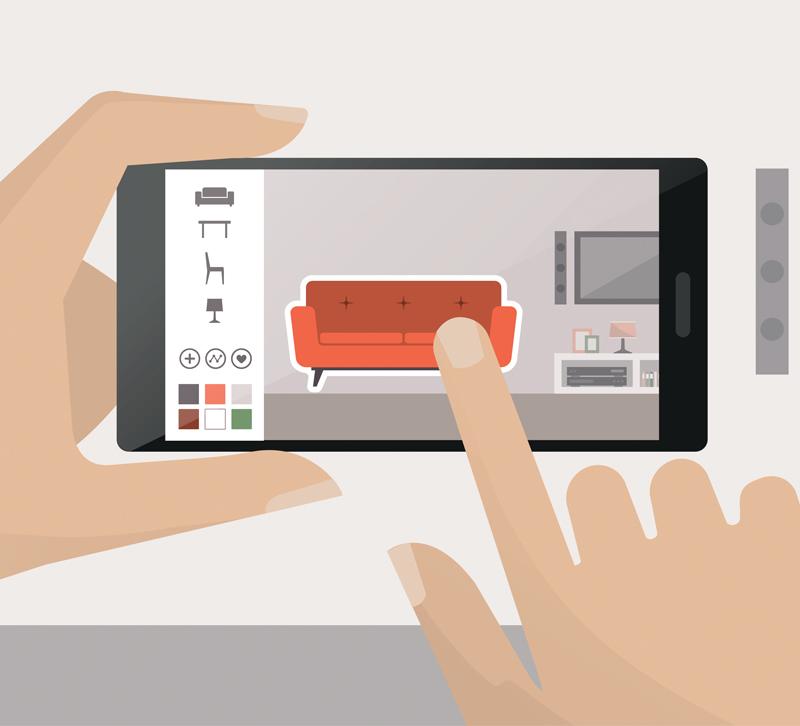Free augmented reality (AR) services. Let that sink in.
It may sound too good to be true, but right now, developers at Mozilla, creator of the Firefox browser, are working on developing an AR tool that will be built into their browser, allowing consumers to virtually place any product on any site into their homes using their camera and Firefox.
This may be a big boon for lighting and home furnishings showrooms because AR technology sells really well. According to Beck Besecker, co-founder and CEO of Marxent, the company that created AR apps for Macy’s and Ashley Furniture, consumers that use AR spend fives times as long with a product, and they’re three times more likely to buy it.
Since giants like IKEA, Wayfair and Pottery Barn have set consumer expectations with AR, other companies have felt increased pressure to build their own AR apps, and for small businesses on a budget, this is simply out of the question. But with Mozilla and other developers making AR available to all businesses, you may be able to take advantage of AR capabilities without the price tag.
Here’s where we are.
AR Now and Beyond
Not surprisingly, AR apps can get pricey very quickly, and it’s clear for the most part only big-box retailers have this technology. Besecker says good AR apps start at $30,000, but that’s not including the cost of creating each 3D product model ($60-70) or marketing, which can be two to three times that amount.
“Otherwise, you’re just hoping people find you,” he says.
Most small businesses can’t drop that amount on an app, but in the next two years, they may not have to. Last December, Mozilla released its WebXR Viewer app on iTunes, which gives developers an open source (meaning they don’t have to build the code, but they can customize it). The app also works with Google’s experimental WebARonARCore on Android.
With WebXR Viewer, website developers can view their websites created with the “webxr-polyfill Javascript library, an experimental library we created as part of our explorations,” Mozilla says. The app isn’t a full browser, but it lets developers design and test pages that could use AR technology.
What Mozilla, Google and Apple eventually want to create is a browser that has AR capabilities within it. No more pricy apps — just one browser for all.
“With web browsing, users don’t need to download a special app just to be able to view a website,” explains Christine Perey, an independent consultant and owner of PEREY Research & Consulting. “Mobile devices will come with AR-enabled features in all apps. Apple and Microsoft and Samsung will ensure this trend happens in a consistent and pleasing way, without requiring the user to download 100 different AR apps.”
So good news: AR technology will soon be available to all, but both Besecker and Perey estimate that it will probably take another 18 months to two years to get here.
What You Need to Do
While AR will be more accessible, retailers will still need access to those 3D product models. This is what Firefox will pull from and insert into the consumer’s camera when he or she opens the AR tool on the browser.
Perey says most manufacturers already have these models as many of their designs start in 3D, but it will be up to the retailer to get them from the manufacturer. So if you haven’t already, start talking with your manufacturers’ reps about AR — the way the industry is moving, it’s a vital conversation to have sooner rather than later.







